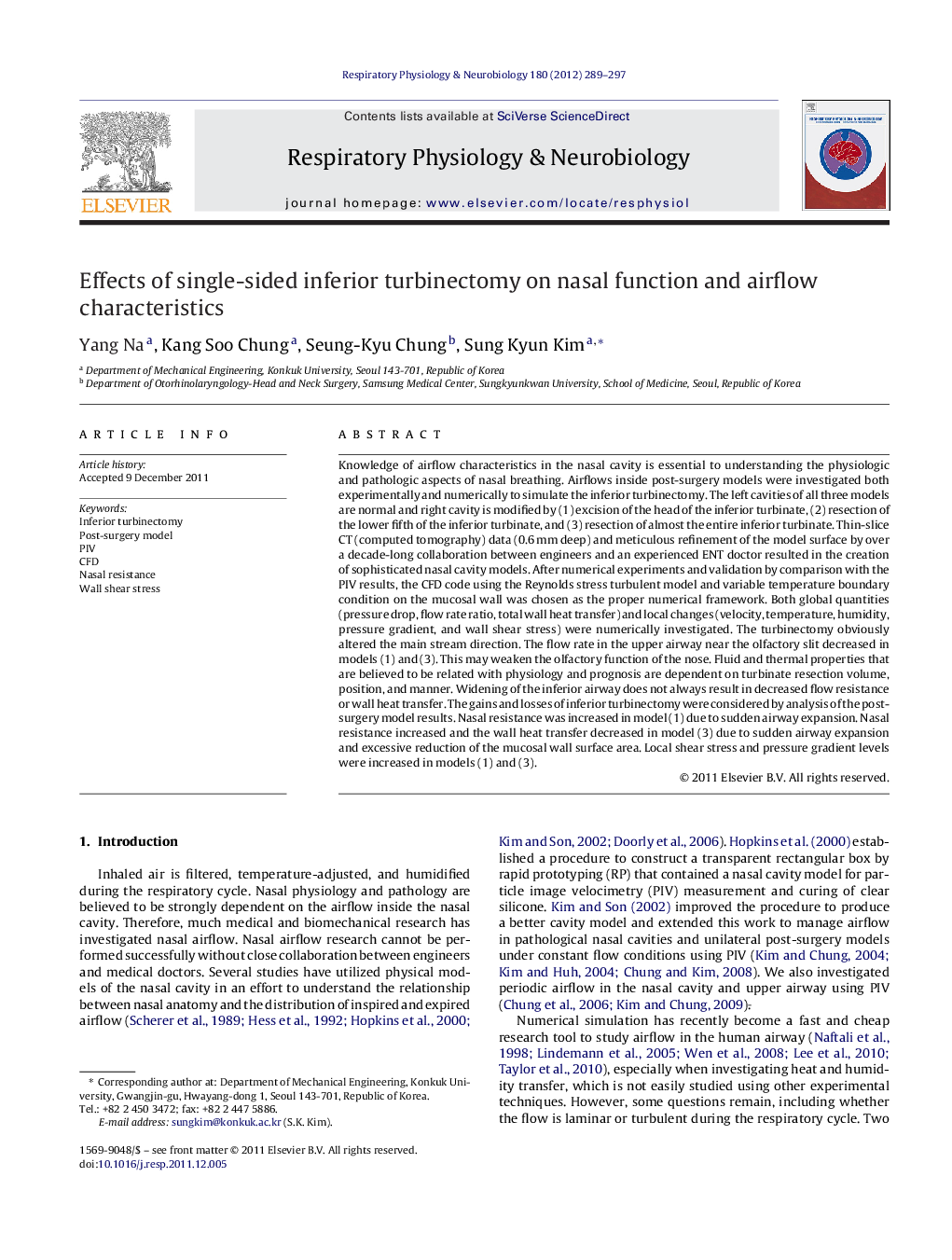| کد مقاله | کد نشریه | سال انتشار | مقاله انگلیسی | نسخه تمام متن |
|---|---|---|---|---|
| 5926351 | 1571340 | 2012 | 9 صفحه PDF | دانلود رایگان |

Knowledge of airflow characteristics in the nasal cavity is essential to understanding the physiologic and pathologic aspects of nasal breathing. Airflows inside post-surgery models were investigated both experimentally and numerically to simulate the inferior turbinectomy. The left cavities of all three models are normal and right cavity is modified by (1) excision of the head of the inferior turbinate, (2) resection of the lower fifth of the inferior turbinate, and (3) resection of almost the entire inferior turbinate. Thin-slice CT (computed tomography) data (0.6Â mm deep) and meticulous refinement of the model surface by over a decade-long collaboration between engineers and an experienced ENT doctor resulted in the creation of sophisticated nasal cavity models. After numerical experiments and validation by comparison with the PIV results, the CFD code using the Reynolds stress turbulent model and variable temperature boundary condition on the mucosal wall was chosen as the proper numerical framework. Both global quantities (pressure drop, flow rate ratio, total wall heat transfer) and local changes (velocity, temperature, humidity, pressure gradient, and wall shear stress) were numerically investigated. The turbinectomy obviously altered the main stream direction. The flow rate in the upper airway near the olfactory slit decreased in models (1) and (3). This may weaken the olfactory function of the nose. Fluid and thermal properties that are believed to be related with physiology and prognosis are dependent on turbinate resection volume, position, and manner. Widening of the inferior airway does not always result in decreased flow resistance or wall heat transfer. The gains and losses of inferior turbinectomy were considered by analysis of the post-surgery model results. Nasal resistance was increased in model (1) due to sudden airway expansion. Nasal resistance increased and the wall heat transfer decreased in model (3) due to sudden airway expansion and excessive reduction of the mucosal wall surface area. Local shear stress and pressure gradient levels were increased in models (1) and (3).
Highlights⺠We simulate nasal airflows in 3 post-surgery models by PIV and CFD. ⺠We consider gains and losses of inferior-turbinectomy. ⺠We study the changes in local/global thermo-/fluid-dynamic properties. ⺠We correlate flow properties with obstructions and prognosis of surgery. ⺠We conclude that results were affected by the turbinate resection volume, position, and manner.
Journal: Respiratory Physiology & Neurobiology - Volume 180, Issues 2â3, 15 March 2012, Pages 289-297